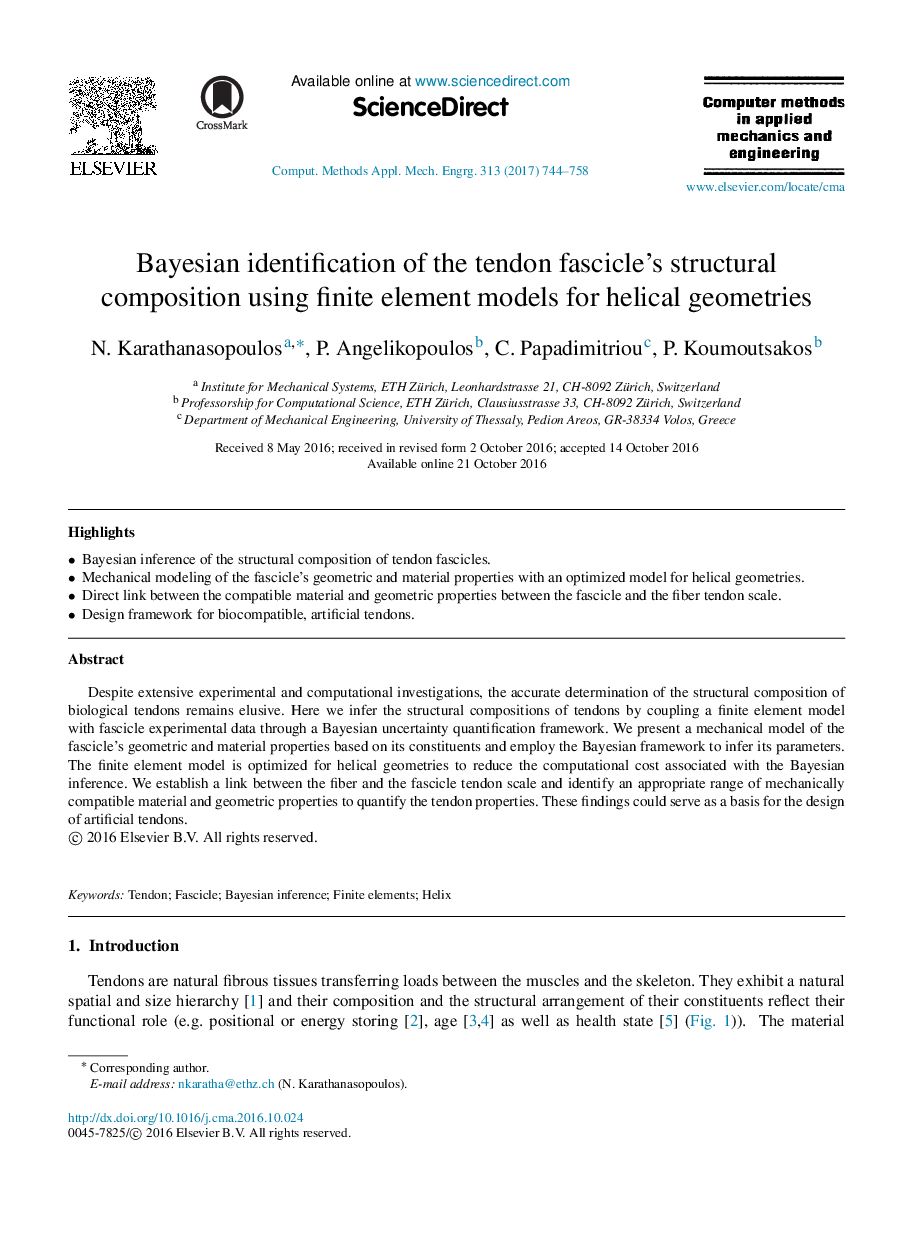| Article ID | Journal | Published Year | Pages | File Type |
|---|---|---|---|---|
| 4963936 | Computer Methods in Applied Mechanics and Engineering | 2017 | 15 Pages |
Abstract
Despite extensive experimental and computational investigations, the accurate determination of the structural composition of biological tendons remains elusive. Here we infer the structural compositions of tendons by coupling a finite element model with fascicle experimental data through a Bayesian uncertainty quantification framework. We present a mechanical model of the fascicle's geometric and material properties based on its constituents and employ the Bayesian framework to infer its parameters. The finite element model is optimized for helical geometries to reduce the computational cost associated with the Bayesian inference. We establish a link between the fiber and the fascicle tendon scale and identify an appropriate range of mechanically compatible material and geometric properties to quantify the tendon properties. These findings could serve as a basis for the design of artificial tendons.
Related Topics
Physical Sciences and Engineering
Computer Science
Computer Science Applications
Authors
N. Karathanasopoulos, P. Angelikopoulos, C. Papadimitriou, P. Koumoutsakos,
